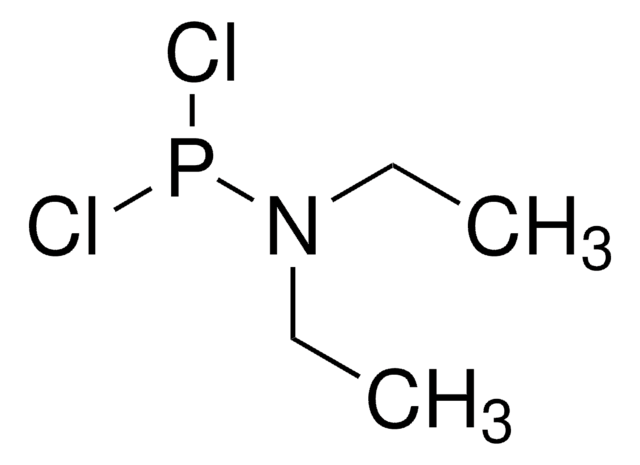According to The Sigma-Aldrich Handbook of Stains, Dyes and Indicators, Rose Bengal is soluble in water at 100 mg/mL, ethanol at 30 mg/mL and 2-methoxyethanol at 60 mg/mL. Conn's Biological Stains (10th Edition) states Rose Bengal has a solubility of 36% in water and 8% in ethanol.
330000
Rose bengal
Dye content 95 %, ≥96% (HPLC)
Sinónimos:
4,5,6,7-Tetrachloro-2′,4′,5′,7′-tetraiodofluorescein disodium salt, Acid Red 94, Bengal Rose B sodium salt, Rose Bengal sodium salt
Seleccione un Tamaño
Seleccione un Tamaño
About This Item
Productos recomendados
Nivel de calidad
Ensayo
≥96% (HPLC)
Formulario
solid
composición
Dye content, 95%
técnicas
titration: suitable
color
red to brown
ε (coeficiente de extinción)
≥ 3000 at 350-354 nm
≥12000 at 311-315 nm
≥32000 at 262-266 nm
≥32000 at 513-517 nm
≥98000 at 546-550 nm at 0.04 g/L (H2O + 1ml 1% Na2CO3)
aplicaciones
diagnostic assay manufacturing
hematology
histology
temp. de almacenamiento
room temp
cadena SMILES
[Na+].[Na+].[O-]C(=O)c1c(Cl)c(Cl)c(Cl)c(Cl)c1C2=C3C=C(I)C(=O)C(I)=C3Oc4c(I)c([O-])c(I)cc24
InChI
1S/C20H4Cl4I4O5.2Na/c21-10-8(9(20(31)32)11(22)13(24)12(10)23)7-3-1-5(25)16(29)14(27)18(3)33-19-4(7)2-6(26)17(30)15(19)28;;/h1-2,29H,(H,31,32);;/q;2*+1/p-2
Clave InChI
UWBXIFCTIZXXLS-UHFFFAOYSA-L
¿Está buscando productos similares? Visita Guía de comparación de productos
Categorías relacionadas
Descripción general
Código de clase de almacenamiento
11 - Combustible Solids
Clase de riesgo para el agua (WGK)
WGK 3
Punto de inflamabilidad (°F)
Not applicable
Punto de inflamabilidad (°C)
Not applicable
Equipo de protección personal
Eyeshields, Gloves, type N95 (US)
Elija entre una de las versiones más recientes:
Certificados de análisis (COA)
¿No ve la versión correcta?
Si necesita una versión concreta, puede buscar un certificado específico por el número de lote.
¿Ya tiene este producto?
Encuentre la documentación para los productos que ha comprado recientemente en la Biblioteca de documentos.
Los clientes también vieron
-
What is the solubility of Rose Bengal, Product 330000?
1 answer-
Helpful?
-
-
What types of applications can Product 330000, Rose bengal be used for?
1 answer-
According to the literature, Rose bengal has been used in a used in neutrophil adherence test and as a generator of singlet oxygen when exposed to laser energy. See: McKinnon, J. , Expt. Med., 164, 1864, (1986) and Gamble and Vadas, Science, 242, 97, (1988).
Helpful?
-
-
What is the Department of Transportation shipping information for this product?
1 answer-
Transportation information can be found in Section 14 of the product's (M)SDS.To access the shipping information for this material, use the link on the product detail page for the product.
Helpful?
-
-
What is the quantum yield of Rose bengal, Product 330000?
1 answer-
According to the literature, the quantum yield of Rose bengal is 0.11. See: Seybold, P.G., et al., Calorimetric, photometric and lifetime determinations of fluorescence yields of fluorescein dyes, Photochem. Photobiol., 9, 229-242 (1969).
Helpful?
-
Active Filters
Nuestro equipo de científicos tiene experiencia en todas las áreas de investigación: Ciencias de la vida, Ciencia de los materiales, Síntesis química, Cromatografía, Analítica y muchas otras.
Póngase en contacto con el Servicio técnico









